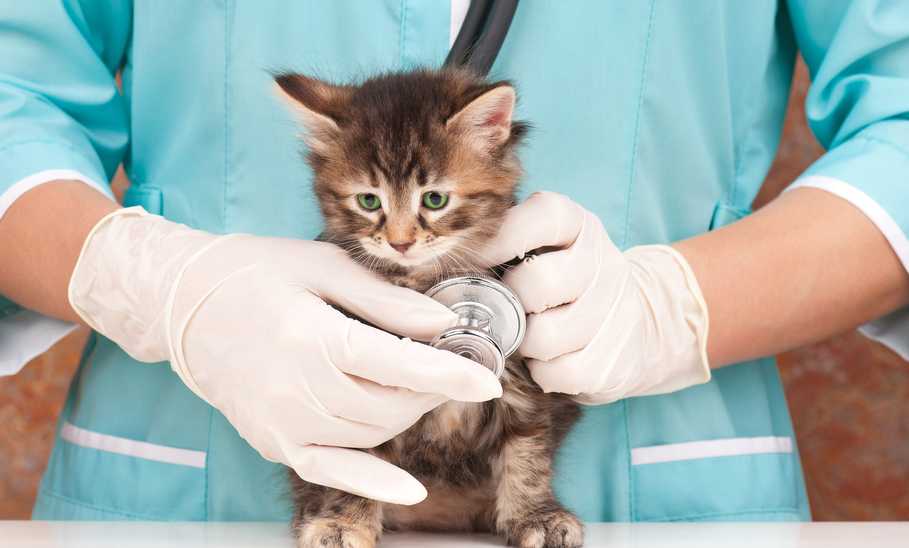How Does Pet Insurance Work? A Complete Guide

Our evaluations and opinions are not influenced by our advertising relationships, but we may earn a commission from our partners’ links. This content is created by TIME Stamped, under TIME’s direction and produced in accordance with TIME’s editorial guidelines and overseen by TIME’s editorial staff. Learn more about it.
For animal lovers, owning a pet can be an incredibly rewarding experience. A dog can help keep you active, while a cat can provide hours of entertainment and double up as a furry cuddle buddy. But pet ownership can be expensive. According to the American Pet Products Association (APPA), pet owners spent $38.3 billion on vet care and product sales in 2023. It’s clear Americans love their pets. But no one loves an unexpected vet bill.
Pet insurance can help cover the cost of unexpected vet care and give you peace of mind that your savings won’t be wiped out if your pet gets sick or hurt. But how does pet insurance work, and do you really need it? Keep reading to learn more.
With human health insurance—at least the in-network kind—your medical provider bills your insurer for their portion of your bill and you pay the remaining amount. Pet insurance works differently. Most policies require you to pay the vet bill out of pocket, then file a reimbursement claim. You may then have to wait several days or longer to be reimbursed for the bill.
Some insurers do offer direct vet pay. If paying a vet bill out of pocket and waiting for reimbursement will be a burden on your finances, make sure you choose a policy with this feature.
While pet insurance isn’t mandatory for pet owners, many will benefit from having coverage. Even the healthiest pets can get sick or injured and need expensive medical care, which can often run into the thousands. Pet insurance can help cover those costs and ensure the pet owner doesn’t have to pay a steep vet bill in full.
The best pet insurance companies, such as Embrace, offer two main types of pet insurance—one designed to cover accidents only and another to cover accidents and illnesses. You can also opt for add-on coverage, such as a wellness plan or dental plan, and some insurers may let you cover multiple pets under one policy. Learn more about each type of coverage below.
Accident-only coverage is usually the cheapest type of pet insurance you can buy. It’s good to have in place if your pet is involved in an accident, such as being hit by a car, breaking a bone, or swallowing a foreign object. Accidents such as these can be costly and they’re impossible to foresee. Getting this type of coverage is wise if you don’t want to dip into your emergency fund if your pet has an accident.
Accident-and-illness coverage helps pay for medical issues as well as accidents. If your pet develops cancer, diabetes, or arthritis, this coverage can reimburse you for treatment costs. Additionally, you’ll be covered for any accidents your pet has that require vet treatment.
Pet wellness plans are usually sold as add-on coverage for an accident and injury plan. This type of coverage helps pay for preventative care, including annual vet visits, vaccinations, heartworm tests, and flea treatments. Opting for a wellness plan lets you pay for your pet’s routine care monthly rather than getting a large bill every year when your pet is due for a check-up.
A basic pet insurance plan offers basic dental coverage. If you want more comprehensive dental coverage, you’ll need to look for a plan that offers it. Some insurers may offer additional dental treatments as part of their accident-and-injury or wellness plan, while others may have dental add-ons you can opt into alongside your regular pet insurance coverage.
If you have more than one pet, look for a policy that offers coverage for multiple pets. Some companies let you cover two or three pets with one shared deductible, while others cover each pet individually but offer a discount for each additional pet.
The cost of pet insurance can vary depending on several factors, which makes it hard to give an average cost. According to the North American Pet Health Insurance Association (NAPHIA), the average pet insurance costs in 2023 were:
| Animal Type | Accident-Only Coverage | Accident-and-Illness Coverage |
|---|---|---|
Dog | $17.01 per month; $204.16 per year | $56.30 per month; $675.61 per year |
Cat | $9.68 per month; $116.11 per year | $31.94 per month; $383.30 per year |
The amount you’ll pay for pet insurance premiums will depend on your pet’s age, species, and breed. Other influential factors include the coverage type and amount, the deductible and reimbursement rate you choose, and your geographic location. Learn more about each factor below.
Your pet’s age is a significant factor when an insurance company calculates your premiums. Younger pets tend to cost less to insure than older pets because they are less likely to have medical issues that result in an insurance claim.
Your pet's species is considered when pricing a policy, with cats typically costing less to insure than dogs. Animals such as rabbits, guinea pigs, iguanas, snakes, and birds can be more expensive to insure than traditional pets because fewer insurers cover them.
Your pet’s breed will also affect the cost of coverage, as some breeds are more susceptible to hereditary illnesses and injuries, such as kidney disease or hip dysplasia.
Like other types of insurance, you can choose the type and amount of coverage you need for your pet. Opting for accident-only coverage is cheaper than choosing accident-and-injury coverage, and adding extra types of coverage, such as a wellness plan, increases the cost even more.
Choosing a higher amount of coverage will result in higher premiums. Pet insurance companies usually have several options for maximum annual coverage, and the more coverage you choose, the more you’ll pay for that coverage.
You can also choose a deductible when you take out a pet insurance policy. A deductible is the amount of money you must pay out of pocket when filing a claim. For example, if you make a claim for a $1,000 vet bill and your deductible is $500, your insurance will reimburse you the remaining $500.
Choosing a low deductible means paying less out of pocket when making a claim, but your premiums will be higher. Conversely, a high deductible usually results in lower premiums and paying a larger chunk of the bill if your pet is injured or becomes ill.
Pet insurance companies offer a variety of reimbursement rates. Typical reimbursement rates for pet insurance are 70%, 80%, and 90%. The option you choose affects how much you receive when you make a claim and how much the insurance costs. The higher the percentage, the more you’ll pay for coverage.
For example, if you choose a policy with a $500 deductible and an 80% reimbursement rate, you’ll pay $500 for a claim, and the insurer will reimburse you for 80% of the remaining claim. For a $1,000 claim, you’ll be reimbursed $400 rather than the total $500.
Your location will also affect the cost of pet insurance coverage, as veterinary care costs are higher in some areas than others. Pet insurance companies will gauge the average cost of vet care in your region and price your policy accordingly.
The exact ailments a pet insurance policy covers will depend on the insurer and coverage you choose. However, certain situations are covered by most pet insurance providers.
Although there are plenty of issues pet insurance can cover, there are also plenty that the average policy won’t cover. The following are usually not covered by pet insurance:
Knowing which pet insurance provider to choose can be complicated. To find the best pet insurance provider, the following factors should be considered.
Most pet insurance providers offer quick quotes on their websites. Pick a handful of insurance providers that seem like a good fit and use their online quote tools to get a price for your specific pet.
Once you have a few quotes, compare them against one another. One policy might be cheaper but offer less coverage, so it’s important to think beyond cost alone when comparing quotes. Consider each policy’s coverage limits, deductible options, and available reimbursement rates. You might find that it’s worth paying a little more per month for a policy that offers more coverage and has a lower deductible.
When you have a couple of finalists, check to see the customer service they offer. Can the companies be contacted 24/7 or just during business hours? How does the claims process work? What do online reviews say about each company? Weigh the options against one another to find the one you’re most comfortable with.
Now you’ve decided on the best policy for you and your pet, it’s time to sign up. Most providers allow you to opt into a policy from the online quote process, which makes getting coverage for your pet quick and easy.
The most common pets that are insured are cats and dogs. However, some insurers may offer coverage for other pets too, including:
If you want to insure an animal other than a cat and dog, you may have fewer insurance providers to choose from. There are options out there, but you need to look harder to find the right coverage for your animal.
Pet insurance might seem like just another expense to add to your monthly budget. However, it can actually save you money in the long run. If your pet is involved in an accident or develops an illness that requires expensive surgery, you’ll be stuck with a substantial vet bill if you don’t have pet insurance. But with insurance, you’ll only be responsible for part of the bill, and your insurer will reimburse you for the rest. If you don’t have the money to pay an unexpected vet bill, pet insurance can be a lifesaver.
Many pet owners will find that pet insurance is worth it if their pet is taken ill or involved in an accident. Pet insurance coverage adds an extra monthly expense to your budget, but could save you a lot of money on expensive vet bills down the road.
Pet insurance typically covers accidents (like swallowed objects, broken bones, or animal bites) and illnesses (like cancer, arthritis, or allergies). It can also cover preventative care, though this will make the policy more expensive. In many cases, it’s possible to tailor the coverage to your needs.
Pre-existing conditions are rarely, if ever, covered by pet insurance. However, some pet insurance companies distinguish between curable and incurable pre-existing conditions and may cover curable ones. If your pet has a health condition, it’s a good idea to ask the insurance company whether they will be covered before taking out a policy.
The length of time it takes to process a pet insurance claim varies from company to company. If your insurer allows online claims, they may be processed in a day or two. However, some claims may take a couple of weeks or more to process.
The information presented here is created by TIME Stamped and overseen by TIME editorial staff. To learn more, see our About Us page.




